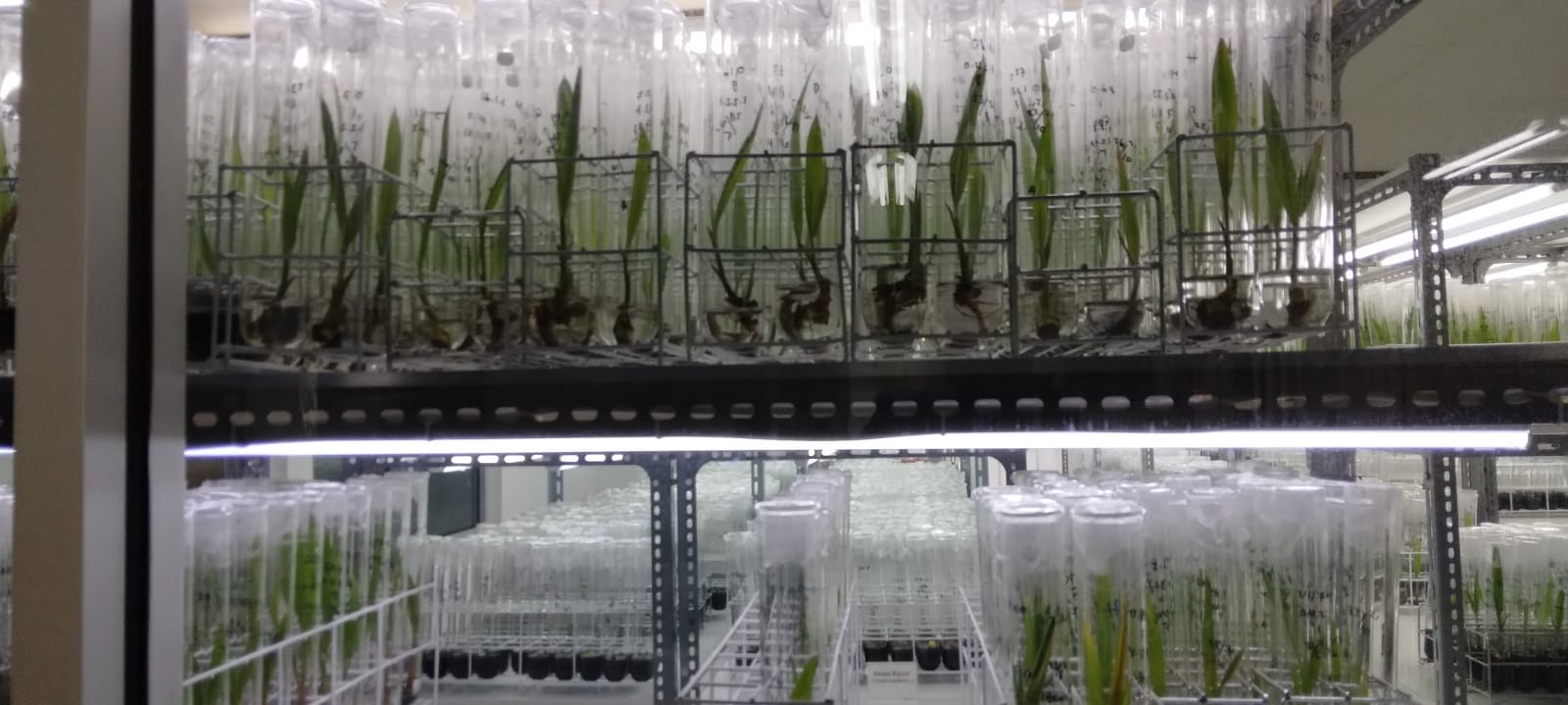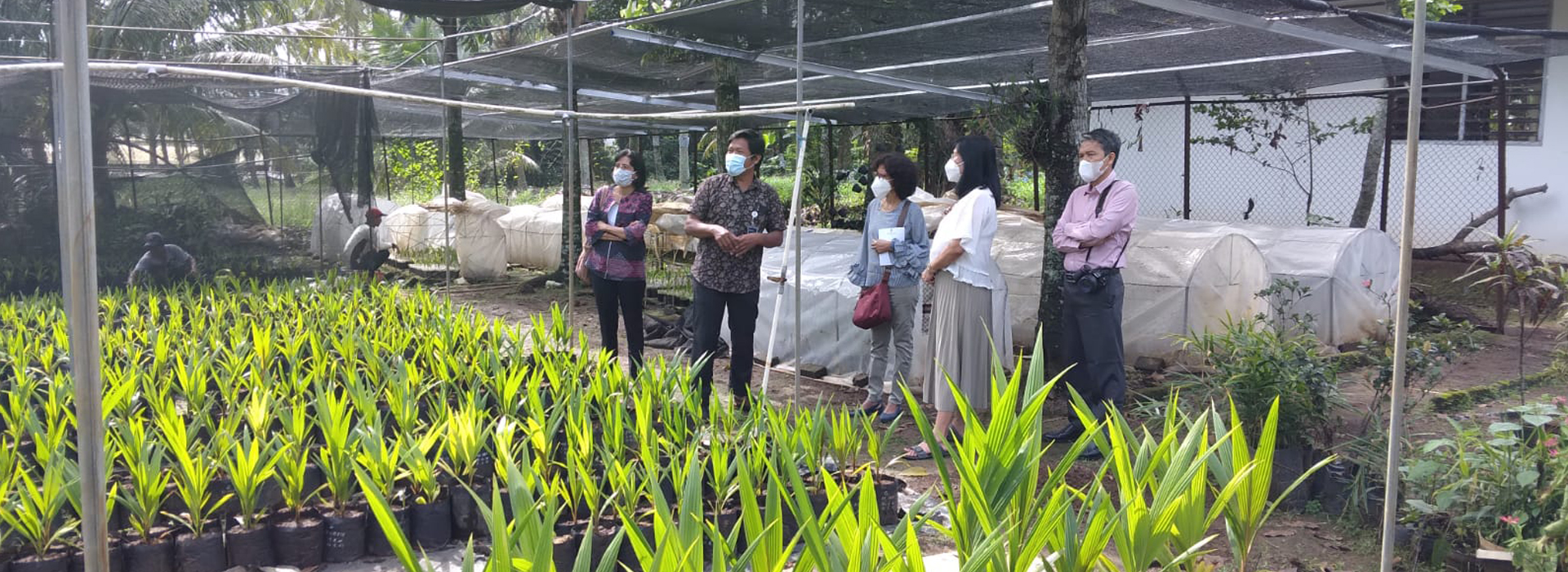As a part of the collaborative programs and to know the different tissue culture techniques followed by government and private laboratories here in Indonesia, Dr Jelfina C. Alouw, Executive Director along with Mridula Kottekate, Assistant Director, Mr. Alit Pirmansah, Market and Statistics Officer and Ms. Maria Widiastuti, Secretary, ICC visited the Laboratory of Plant Cell Culture & Micropropagation, Bogor on 8th November 2021. This is part of the activity under ITAG 1 In situ and Ex situ Conservation of ICC -COGENT program.
Dr. Imron, in charge of the laboratory welcomed the team. Dr. Jelfina briefed him about the purpose of the visit of the team. Mr. Imron explained the activities of the laboratory. He informed that the laboratory has been established since 1998 and was earlier working under Ministry of Agriculture, Government of Indonesia, but now it is an independent laboratory working directly under the Government as part of the state-owned enterprises.


In the laboratory they are producing different tissue culture plantlets including Kopyor variety of coconut and Entog Variety, a superior dwarf variety which has larger fruit size. The demand for the Kopyor TC seedling is very high and the laboratory is not able to meet the increasing demand. The techniques used is embryo culture and per day around 100 embryos are transferring into the culture. The raw materials i.e., embryo of Kopyor variety is being collected from their own garden established in an area of 24.6 ha where more than 3,000 Kopyor palms are maintained. The entire process takes around 14 months which includes transferring the embryos to media; monitoring in the controlled laboratory condition; transferring to greenhouse condition for 12-14 weeks and after observing the acclimatization period to farmer’s field. The success rate is around 90-95%. So far more than 26,000 seedlings of the Kopyor TC distributed from the laboratory and it is being planted in almost all parts including Sumatera, Kalimantan, and Sulawesi. Mr. Imron mentioned that presently they are using 1:1 embryo culture technique which is very slow and not sufficient to meet the demand, but other fast multiplication techniques including Somatic Embryogenesis (SE) are under trial and hopefully it will be adopted soon.
The team visited the laboratory, green house, and the Kopyor and Entog coconut garden along with Mr. Imron and he explained the different procedures they follow. The visit was very informative. The discussion ended with the vote of thanks extended by Dr. Jelfina. She presented the token of appreciation and publications of ICC to Mr. Imron.

